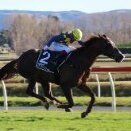-
Available Subscriptions
The Rest of the World
80,742 topics in this forum
-
-
- Journalists
- 0 replies
- 90 views
-
-
-
- Journalists
- 0 replies
- 86 views
-
-
- Journalists
Wesley Ward Trainees Make Their Mark in Debuts
-
- Journalists
- 0 replies
- 96 views
-
- Journalists
Callie Witt’s Parents Thank the Racing Community
-
- Journalists
- 0 replies
- 86 views
-
- Journalists
Nest Installed as 5-2 Favorite in Kentucky Oaks
-
- Journalists
- 0 replies
- 100 views
-
-
- Journalists
- 0 replies
- 108 views
-
-
-
- Journalists
- 0 replies
- 118 views
-
-
-
- Journalists
- 0 replies
- 94 views
-
-
-
- Journalists
- 0 replies
- 91 views
-
-
-
- Journalists
- 0 replies
- 104 views
-
-
- Journalists
Luxembourg Straight To Derby
-
- Journalists
- 0 replies
- 110 views
-
- Journalists
Yakteen Heads into Eye of Kentucky Derby Storm
-
- Journalists
- 0 replies
- 105 views
-
-
- Journalists
- 0 replies
- 84 views
-
-
-
- Journalists
- 0 replies
- 83 views
-
-
-
- Journalists
- 0 replies
- 86 views
-
-
-
- Journalists
- 0 replies
- 76 views
-
-
- Journalists
Champion Juvenile Corniche Moves to Pletcher
-
- Journalists
- 0 replies
- 77 views
-
- Journalists
TDN Snippets: Week of Apr. 25 – May 1
-
- Journalists
- 0 replies
- 95 views
-
- Journalists
Breeze-up Focus Switches To Osarus
-
- Journalists
- 0 replies
- 94 views
-
-
- Journalists
- 0 replies
- 79 views
-
-
- Journalists
Stallion Curlin to Mischief Retired
-
- Journalists
- 0 replies
- 139 views
-
- Journalists
Corniche Moved to Pletcher Barn
-
- Journalists
- 0 replies
- 80 views
-
-
- Journalists
- 0 replies
- 88 views
-
-
- Journalists
Seven Days: Sharing The Joy
-
- Journalists
- 0 replies
- 93 views
-
-
- Journalists
- 0 replies
- 90 views
-




